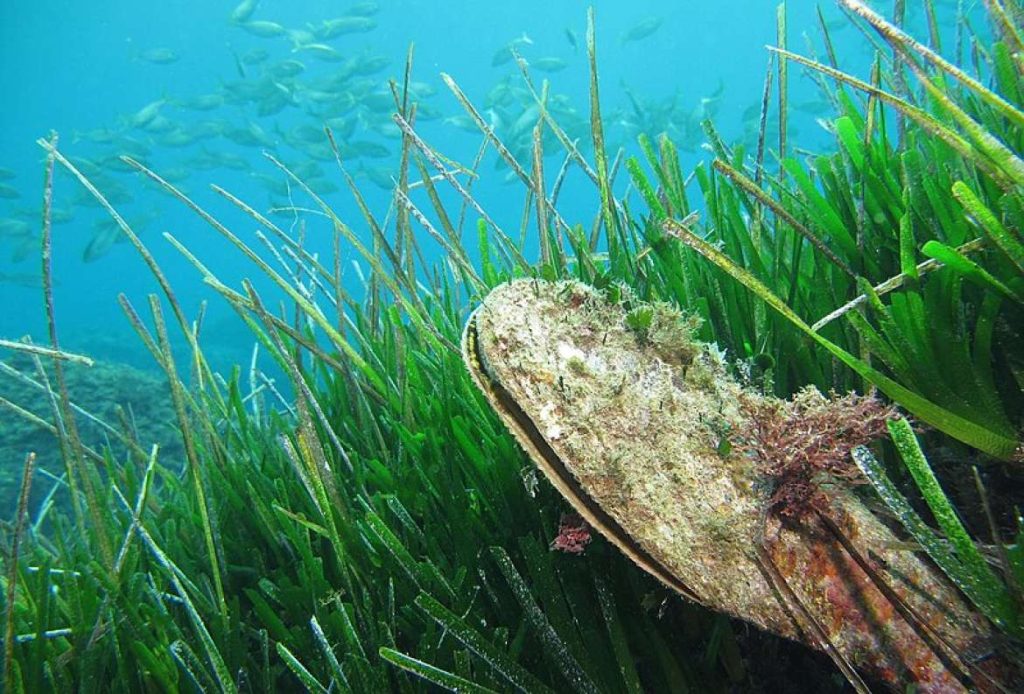Seven living Croatian noble pen shells have been found in the Porec waters, which is enough to give researchers, experts and carers a spring in their step.
As Lucio Lorencin/Morski writes, on July the 17th, the Porec-based Society for Underwater Activities and Sport Fishing conducted a diving search in the area of Plicina Civran. The aim of the search was to verify reports of live Croatian noble pen shells (Pinna nobilis). In addition to the Porec club, divers from Medulin clubs also participated: EKO MORE and RK “CENTAR”.
The divers searched the seabed, spanning two hectares. To the great surprise and satisfaction of all participants, seven live Croatian noble pen shells were found among the many shells of dead ones, likely victims of the disease which swept the Mediterranean back in 2016, snuffing out the lives of many.
One of the pen shells found is “older”, with a height of around 20 cm. The other 6 are younger, ranging from 10 to 60 mm tall. The people of Porec affectionately gave the name “Puskica” to the larger of the shells. The other small pen shells found alive in this area are located in the zone around Puskica.
Of the Croatian noble pen shells found in the Plicina Civran area, which lies just north of Porec, the smallest one is somewhat special. While all the others are anchored naturally into the sand, this one is growing attached to a small sea sponge – Spongia officinalis.
The bottom is rocky and interspersed with sandy surfaces. Puskica is surrounded by a meadow of “thin” sea fringe, comprised of a type of sea algae from the “Cymodoceaceae” family. The Medulin divers recalled that they had previously discovered the most numerous living pen shells in the meadows of a marine flowering plant called “Posidonia oceanica”.
The Medulin diving association EKO MORE, at the instigation of Marinko Babic, has been involved in the search for surviving Croatian noble pen shells since back in autumn 2020.
Since then, they’ve found 9 live pen shells in the waters of Medulin and Pula. Under the coordination of biologist Sandro Dujmovic from the Brijuni National Park Public Institution and Silvie Buttignoni from JU “Natura Histrica”, metal cages were placed around 7 of those pen shells to protect them from possible predators (octopus, crabs, sea bream, and of course, humans).
Noble pen shells were observed dying en masse in Spain back in 2016 owing to a disease, and since then it has affected the entire Mediterranean. Here in the Adriatic Sea, the first pen shell deaths were recorded in 2019. Mortality in many locations is a tragic 100%, and due to the dramatic decline in their population, the noble pen shell received the status of a critically endangered species in just one year.
It is believed that the cause of this pen shell plague is a parasite called “Haplosporidium pinnae”. Sea currents and especially higher sea temperatures in the summer months favour the transfer from pericarp to pericarp.
In 2020, the occurrence of this plague affected Mediterranean countries with pen shell population mortality of up to 100%. So far, not a single effective method has been established that could prevent plague and the spread of infection.
In order to preserve the noble pen shell as of 2020, the Ministry of Economy and Sustainable Development implemented a project called ”The preservation of the pinna nobilis in the Croatian part of the Adriatic Sea”.
According to this project, the Adriatic is divided into three regions: northern, central and southern. The coordinators of the activities by region are: the Brijuni National Park Public Institution (for the northern Adriatic), the Telascica Nature Park Public Institution (for the central Adriatic) and the “More i karst” Institution (for the southern Adriatic). Everyone who notices a live pen shell is invited to remember the location and report it to the regional coordinators. It is important to note that Croatian noble pen shells should never be touched, it is enough to gently wave near it with your fingers the under water, if it is alive, the shell will close.
For more, make sure to check out our dedicated lifestyle section.








